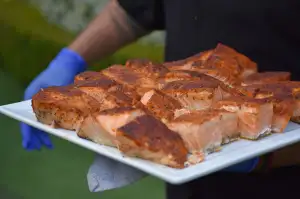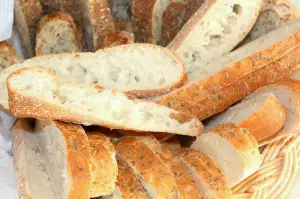Unlock the Secrets of Cream of Tartar: Elevate Your Baking with this Must-Have Ingredient

Cream of tartar, also known as potassium bitartrate, is a versatile ingredient that has been used in baking for centuries. It is a byproduct of winemaking and is commonly found in the form of a white powder. Although it may seem like a mysterious ingredient, cream of tartar has many benefits and uses that can elevate your baking to new heights. Whether you're making fluffy meringues or tender cookies, cream of tartar can be your secret weapon in the kitchen. So let's unlock the secrets of cream of tartar and discover how it can take your baking to the next level.
Benefits of using cream of tartar in baking
Cream of tartar is a versatile ingredient that offers numerous benefits when used in baking. Firstly, it acts as a stabilizer for whipped egg whites, helping them to maintain their structure and form stiff peaks. This is particularly useful when making meringues or angel food cakes.
Secondly, cream of tartar can also prevent sugar crystallization in syrups and frostings. By adding a small amount of cream of tartar to your recipe, you can ensure a smooth and creamy texture without any unwanted graininess.
Furthermore, cream of tartar is known for its leavening properties. When combined with baking soda, it creates carbon dioxide gas, which helps doughs and batters rise during baking. This makes it an essential ingredient in recipes like snickerdoodle cookies or homemade playdough.
Lastly, cream of tartar can also enhance the flavor of certain desserts. It adds a subtle tanginess that complements sweet flavors, making your baked goods even more delicious.
Overall, the benefits of using cream of tartar in baking are undeniable. It improves the stability and texture of whipped egg whites, prevents sugar crystallization, acts as a leavening agent, and enhances flavor. Incorporating this must-have ingredient into your recipes will surely elevate your baking to new heights.
Common uses of cream of tartar in recipes
Cream of tartar is a versatile ingredient that is commonly used in baking recipes. It serves several purposes and can be found in a variety of sweet and savory dishes. One common use of cream of tartar is in stabilizing and adding volume to whipped egg whites. When beaten, cream of tartar helps create stiff peaks, making it ideal for meringues, soufflés, and angel food cakes. Additionally, cream of tartar can be used as a leavening agent in recipes that do not contain baking powder or baking soda. It reacts with baking soda to produce carbon dioxide gas, resulting in a lighter texture in baked goods such as cookies and cakes. Furthermore, cream of tartar can prevent sugar crystallization in syrups and candies by inhibiting the formation of large sugar crystals. This makes it an essential ingredient in the production of smooth and creamy fudges, caramels, and frostings. With its ability to stabilize, leaven, and prevent crystallization, cream of tartar is truly a versatile ingredient that enhances the taste and texture of various baked treats.
How to substitute cream of tartar in recipes
If you find yourself without cream of tartar, don't worry! There are a few substitutes you can use to achieve similar results in your baking. One common substitute is using lemon juice or vinegar. For every 1/2 teaspoon of cream of tartar, you can use 1 teaspoon of lemon juice or white vinegar. These acidic ingredients will help activate the baking soda and provide the same leavening effect as cream of tartar.
Another option is to use baking powder instead. Baking powder is a combination of cream of tartar and baking soda, so it already contains the acid needed for leavening. To replace 1 teaspoon of cream of tartar, simply use 2 teaspoons of baking powder.
Keep in mind that when substituting cream of tartar, the taste and texture may be slightly different. Cream of tartar has a unique tangy flavor that may not be replicated exactly with substitutes. However, these alternatives will still help achieve the desired rise and texture in your baked goods.
Experiment with these substitutions in your favorite recipes and see which one works best for you. It's always a good idea to test a small batch before making larger quantities to ensure the desired outcome.
Now that you know how to substitute cream of tartar, there's no need to panic if you run out. You can still create delicious baked goods with the right alternatives on hand. Happy baking!
Tips for storing cream of tartar
Tips for Storing Cream of Tartar:
1. Keep it airtight: To maintain the freshness and potency of cream of tartar, store it in an airtight container. This will prevent moisture and air from affecting its quality.
2. Store in a cool, dark place: Cream of tartar is sensitive to heat and light, so it's best to keep it in a cool, dark pantry or cupboard. Avoid storing it near the stove or any other heat source.
3. Label and date your container: It's important to label your cream of tartar container with the date of purchase or expiration. This will help you keep track of its freshness and ensure you use it before it loses its effectiveness.
4. Avoid humidity: Moisture can cause cream of tartar to clump or lose its potency. Make sure the storage area is dry and free from humidity.
5. Check for clumps before use: Over time, cream of tartar may develop clumps due to moisture absorption. Before using it in your recipes, check for any clumps and break them up with a fork or sieve if necessary.
By following these simple tips, you can ensure that your cream of tartar remains fresh and ready to elevate your baking creations to new heights!
In conclusion, cream of tartar is a must-have ingredient for any aspiring baker. Its unique properties and benefits make it an essential component in many recipes. From stabilizing egg whites to preventing sugar crystallization, cream of tartar elevates your baking to new heights.
By incorporating cream of tartar into your recipes, you can achieve lighter, fluffier cakes, cookies with the perfect texture, and meringues that are beautifully crisp on the outside and soft on the inside. It truly is a secret weapon in the kitchen.
Don't be afraid to experiment with cream of tartar in your baking endeavors. Try adding it to your favorite recipes and see the difference it makes. You'll be amazed at how this simple ingredient can transform your baked goods.
So next time you're whipping up a batch of cookies or preparing a cake for a special occasion, don't forget to reach for that jar of cream of tartar. With its ability to enhance flavors and improve texture, it's sure to take your baking from ordinary to extraordinary.
Unlock the secrets of cream of tartar and unlock a world of delicious possibilities in your own kitchen. Elevate your baking game and impress friends and family with the incredible results. Happy baking!
Published: 26. 01. 2024
Category: Recipes



